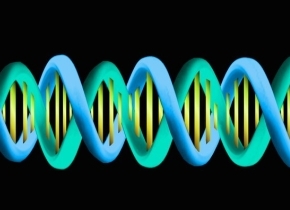

5000到7000年前,Y染色体多样性骤减。一项新研究分析,宗族争斗可能是导致Y染色体多样性骤减的原因。
撰文\播音:克里斯托弗·因塔利亚塔(Christopher Intagliata)
翻译:陈美娟
校对:张艺箫
Men inherit their Y chromosomes from their fathers. And they get an almost exact copy, other than a few mutations. Meaning very little changes about the Y chromosome from generation to generation.
男性Y染色体从他们的父亲那里遗传而来。除了很少部分的突变外,他们的Y染色体几乎得到完整复制。这意味着一代又一代间Y染色体很少有改变。
"You may just have 100 people with the same Y chromosome, because they're all descended from one man." Marcus Feldman, a population geneticist at Stanford. "They all had this great great-great-great-great-great-great-grandfather. And every male relative of that individual who's a first-degree relative has the same Y chromosome."
“也许你可以找到100个具有与你相同的Y染色体的人,因为他们有同一个男性祖先。”斯坦福大学的一名人口基因学家马尔克斯·菲尔德曼(Marcus Feldman)说“他们都有同一个曾曾曾曾曾曾曾祖父。并且他们的每一个一级直系男性亲戚都有同样的Y染色体。”
Researchers have thus used Y chromosome data—along with mitochondrial DNA, which is passed down only by our mothers—to investigate aspects of ancient populations. For example, one recent study found a huge drop in Y chromosome diversity five-to-seven thousand years ago. At the same time, mitochondrial DNA diversity continued to grow, implying a possible crash in the male population, with 17 women to every man. But:
研究者因此使用Y染色体数据——以及线粒体DNA数据,一种只由母亲遗传的信息——来调查古人口的组成。例如,近期的一个研究发现,5-7千年前Y染色体多样性剧减。同时,线粒体DNA多样性持续增长,这表明男性人口可能骤减到17名女性对应一名男性的地步。但是:
"It seemed to us that the 17-to-1 sex ratio was just too extreme to be real."
“在我们看来,17:1的性别比极端到违背现实。”
So Feldman and his team used computational models to investigate other ideas. And they found that bloody fights between genetically homogenous clans could have produced the same results. "Essentially we're saying the clans fighting one another are built around having the same Y chromosome."
因此菲尔德曼与他的团队使用计算机模拟模型来探索可能的原因。他们发现,同基因的宗族间发生的血腥斗争可能会带来同样的模拟结果。“基本上,我们认为宗族间的互相争斗导致拥有相同Y染色体这种现象的发生。”
Imagine a single deadly battle knocking out a whole clan of men with the same Y chromosomes. Then repeat that unpleasant scenario a few times. You’d get a huge drop in the diversity of Y chromosomes, as the victorious clans won battles and expanded. The details are in the journal Nature Communications. [Tian Chen Zeng, Alan J. Aw & Marcus W. Feldman, Cultural hitchhiking and competition between patrilineal kin groups explain the post-Neolithic Y-chromosome bottleneck]
想象一下,一场致命的斗争淘汰了一整个宗族里拥有相同Y染色体的男人们。这个不幸的场景随后又发生了几次。当胜利的宗族赢得斗争并扩张的时候,Y染色体多样性也在剧减。这项研究的细节发表在《自然-通讯》杂志上。
Eventually, Y chromosome diversity bounced back, as smaller clan structures were replaced by large, genetically diverse cities and societies—a cultural innovation that we, too, inherited.
最终,随着规模较小的宗族被规模更大、基因更多样的城市和社会结构取代,Y染色体多样性回弹了——我们,作为文明创新的一部分,也遗传了这种多样性。
 京公网安备11010502039775号
京公网安备11010502039775号